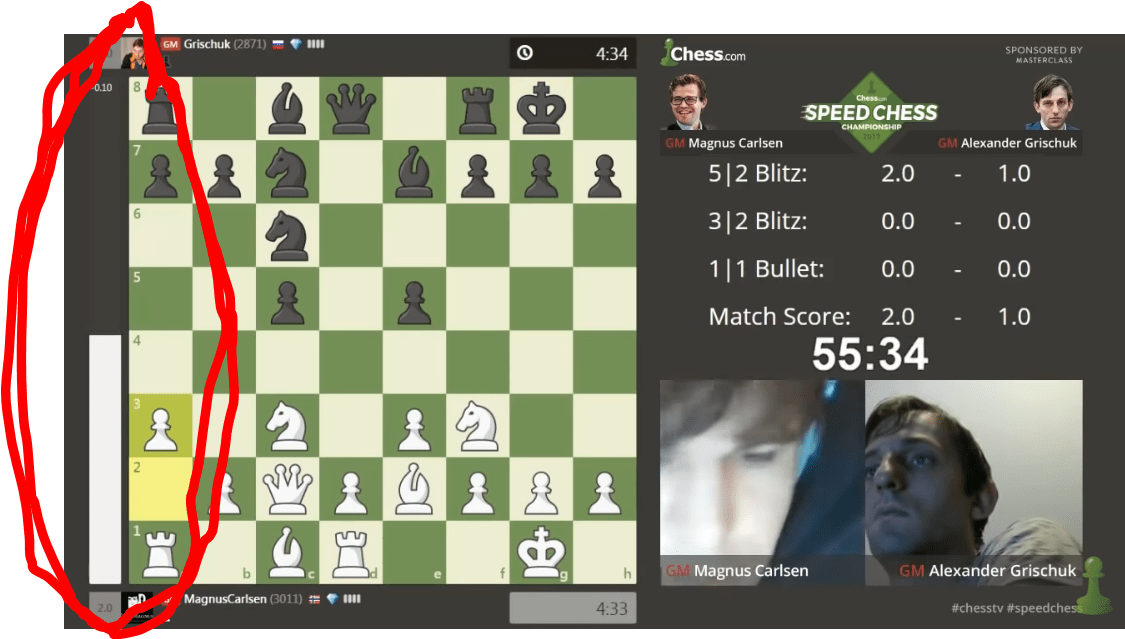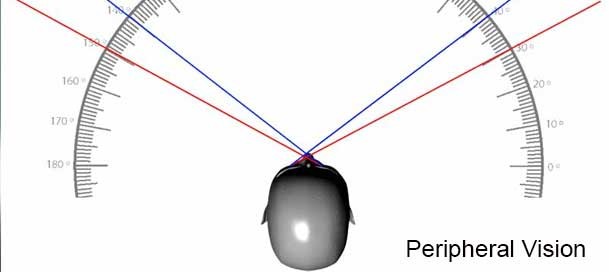
The case against using computer chess engines during games on stream.
Hi there,
I've been spectating a bunch of chess streams on Chess.com's ChessTV platform, the St.Louis Chess Club's stream and others. One noticeable characteristic I've seen on streams can be described in the image below.

The bar on the left side, that is highlighted, is an engine evaluation meter. Whenever each of the player moves, the bar may change by going up or down.
The more white the bar is, the worse black's position is. The more black the bar is, the worse white's position is. The position shown above is slightly better for black, according to chess.com's engine.
Now, given we have a little bit of an understanding of what is being discussed here, I would like to make a plea for chess.com and all streams to not include the engine evaluation meter while discussing live games on stream.
There are a few issues I find with having it there and I discuss them below.
1. Engines devalue in-game commentary:
I believe this is the strongest argument that can be made against having the sidebar. Let's run through an example to help describe what I'm getting at here:
In the above screenshot of the game, Carlsen vs Grischuk, IM Daniel Resnsch & GM Robert Hess commentate in entertaining style as usual. They give their thoughts on various aspects of a position such as positional planning, strategy, discussion of sacrifices, etc. Their commentary is why chess.com's stream is as successful as it is. The way they talk and behave is why they draw in viewers.
However, when include the engine bar, something noticeable changes about the stream's quality. The engine devalues a chess game's suspense. If I know the exact evaluation given by a authority without explanation, that leaves me always thinking: "What is the point of the commentary if I know the evaluation of the current position?" or "Why aren't the commentators talking about the engine moves (the correct moves)?"
It also leaves me with an empty feeling that prevents me from developing my own ideas about a position. If I know the evaluation of a position, that's often a sign whether various sacrifices and tactics work or are present in positions. I won't otherwise think for myself if I have the engine deciding what I should think about or how I should approach a position.

This is similar to cheating on an exam where you look at your neighbors'. If I see what my neighbor (assuming they are competent) is putting as their answer, that gives you an idea of what the answer is or could be. Consequently, that will devalue the test and your learning experience as a whole since you're spoon fed an answer.
2. It's distracting:
Over 15,000-100,000 years ago, humans transitioned away from hunter-gatherer societies and moved towards ancient agricultural civilizations such as the Babylonian empire & Indus Valley civilization. What were humans doing before this time however? Well, they were living on the savannah hunting and gathering for food and resources. Humans also have always been on edge given the numerous dangerous creatures and environmental factors present.
In order to defend ourselves from long ago, we had to constantly be on guard from dangerous animals such as saber tooth tigers, bears, mammoths, large rodents, etc. We had to evolve many traits in order to cope and survive in that brutal age. One of the traits, that was developed over time, to help us survive was our peripheral vision. It was useful in avoiding getting eaten, stabbed, or being hit by various objects.

Modern day humans, however, do not have to concern themselves with dangerous animals for the most part. We still do have our peripheral vision though as a result of it being drummed into us through evolutionary processes. Whenever we see a moving object such as a small fly, an eye floater, or a bird outside of our window, we are drawn to the movement of these objects. They distract us momentarily from our daily tasks such as walking around or working on our computers.
The same thing happens while we are watching chess streams with an evaluation gauge. We are distracted and drawn away from the chess board. The commentary itself is devalued therefore as well by having to have to constantly look away towards evaluation gauge. Whenever it moves, I have to look at it. It draws my eyes away, out of instinct, from the game for a few seconds at a time. That may not sound like much in itself, but over time if you look 100-200 times an hour at the bar, that accumulates in time spent at looking at the bar instead of the game. It takes away viewing time from the stream.
3. You don't learn anything from the engine:
This is the most obvious one in my view. What are we learning on stream with the evaluation gauge? We understand that the position has an evaluation, but that evaluation is meaningless without context and commentary given beforehand.
Commentators are often not even in sync with what engines say about a position and even if they are, their commentary isn't as creative or enhanced given the evaluation meter.
4. It kills the suspense:
From an entertainment perspective, if I know what the ending to a game or movie will be, that will dull my viewing experience. What fun is life, if you knew the future and everything to come? You would be bored if you knew exactly what would happen at every point in your life.

The same goes for the evaluation meter: if I know the evaluation of a position, that takes away from the suspense and tension in a position. Games are more boring if you know what is happening exactly on a deterministic level.
Solution:
I actually like how the St.Louis Chess club does their streams regarding the engine sidebars.

Yasser Seirawan (on the right) and Jennifer Shahade (on the left) first give their thoughts on the position without the use of engines and analyze it until they are content. Thereby, the audience is also usually satisfied with their analysis.
After about 10-15 minutes of commenting, their co-commentator and assistant, Maurice Ashley, brings up the position with various lines and ideas proposed by the engine.

This helps bring new and fresh ideas that the Yasser and Jennifer haven't looked at and a conversation of ideas is born about how we can understand a chess position.
I realize there is more nuance to be discussed regarding this topic in the future, but I hadn't seen this being discussed nor articulated anywhere before.
I hope this post helps make the argument towards constructively using a chess engine and learning chess!
Sincerely,
InfiniteFlash
